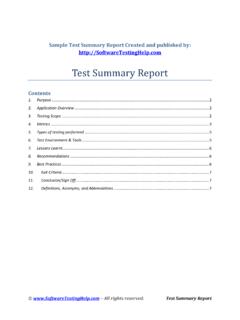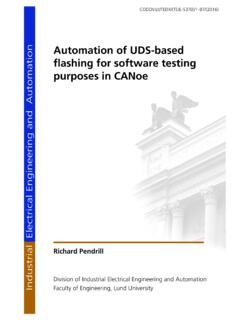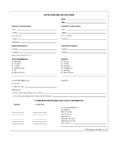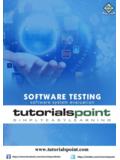Transcription of Best Practices for Use of Sine Vibration Testing - NASA
1 National Aeronautics and Space Engineering and Safety Center Technical Bulletin No. 15-03 sine Vibration (SV) Testing involves subjecting the test article to a swept sine input over a frequency range (typically 5-100 Hz) to replicate the low-frequency launch environment. This test method is used for various purposes on a structural model but mainly on flight articles. The SV levels are derived from measured flight data or based on interface acceleration levels from coupled loads analysis (CLA). A logarithmic sweep rate is typically used to excite a constant time interval per bandwidth for the test ( , 2 or 4 octave/min), which is intended to simulate sustained sine and transient events that occur during launch. Risks can be mitigated through best Practices for Use of sine Vibration Testing Background of SV Testing SV Testing is required by NASA-STD-7002 and most launch vehicle organizations as a final dynamic qualification of the payload to demonstrate acceptability for flight.
2 NASA requirements differ however between the SV Testing requirements provided in Air Force Standard SMC-S-016, Test Requirements for Launch, Upper-Stage and Space Vehicles, and The European Space Agency (ESA) Space Engineering Testing Standard Testing RisksTest incidents and mishaps have happened associated with the risk of Testing an article through resonance. The following is a list of identified risks: Testing in a frequency range beyond the CLA validity or cut-off frequency, or beyond the range of model test correlation. Lack of definition of test abort settings criteria and workable margin between limit and abort levels. A hard shut down can happen either due to loss of electrical power and/or exceeding amplifier capability. Lack of sufficient pre-test analysis and non-linear response in the structure. Lack of sufficient instrumentation to adequately monitor hardware responses and protect from over-test.
3 Unpredicted interactions between the shaker and test article. Incorrect software version in the drive Practices for SV Testing Perform sufficient pre-test analysis to determine instrumen-tation locations and response limits which can be used to pro-tect the hardware from over-test. Prior to running a full-level test, lower levels of input with proportional limits should be run to verify the behavior of the test article and control system. After completion of each low-level run, the response should be compared with analysis predictions and prior runs to verify that the test article is behaving as expected. Structural response in this test is through resonance, thus the limit and abort levels need to be properly defined. Clearly define and implement response abort levels for which positive margin of safety can be demonstrated for the hardware. Do not test beyond the model correlation frequency range and/or the CLA range as margins cannot be relied upon because responses in that range are not available.
4 Even if the test item is expected to have rigid body behavior, define and implement response aborts. This prevents frequency shifts and unexpected resonance build-up, and to prevent the unexpected. At the beginning of the test, check and compare the unfiltered or raw time histories and the controller spectra. Expect some differences in response limits and aborts and adjust accordingly. Consider non-proportional limits at the lower levels of ex-citation to allow for additional response to understand lightly damped responses; use proportional limits from there onwards to verify controller performance. The team should define in advance the control strategy that best suits the objectives. This is related to average, weighted average, or extremal control use. References1) National Aeronautics and Space Administration, Payload Test Requirements, NASA Technical Standard NASA-STD-7002, September 10, ) Air Force Space Command Space and Missile Systems Cen-ter, Test Requirements for Launch, Upper-Stage and Space Ve-hicles, SMC Standard SMC-S-016, September 5, ) ESA Space Engineering Testing Standard, ECSS-E-ST-10-03C, June 1, [g]Time [sec] sine Sw
















